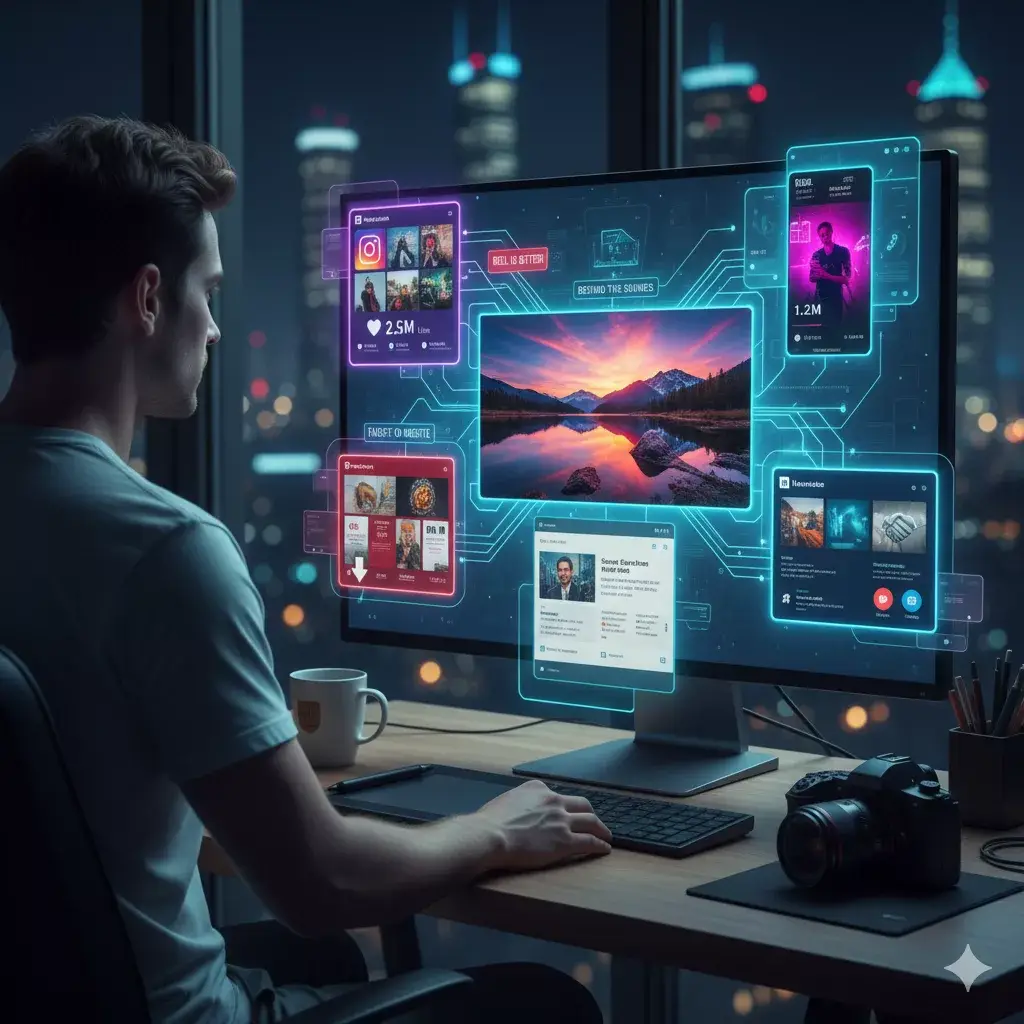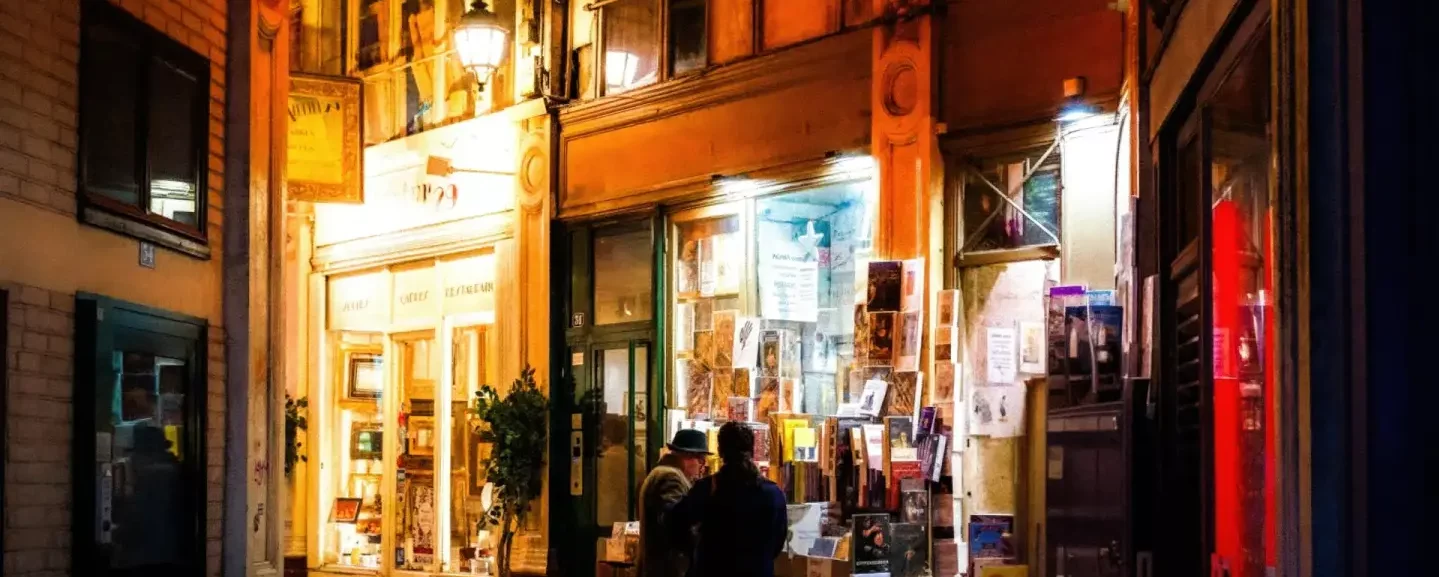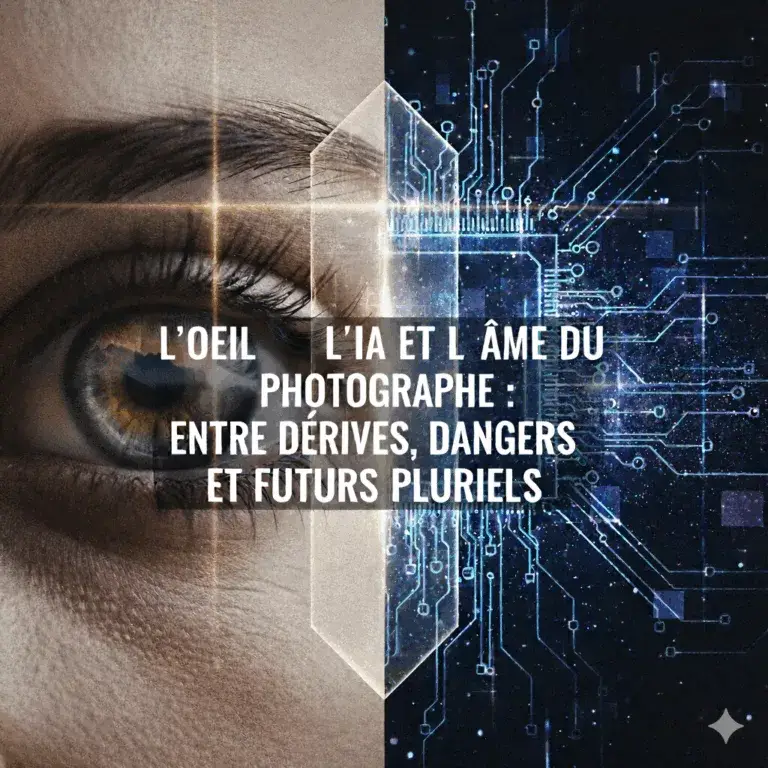
Preamble: There was a time when a photographer’s reputation was built in galleries, agencies, and the glossy pages of magazines. Today, it largely plays out on a 6-inch screen, at the frantic pace of scrolls and likes. Social media has become a universal showcase, an incredibly powerful marketing tool, and a creative bottleneck. It has given a voice to millions of artists while simultaneously enslaving them to an algorithm. For a photographer, being present on it is almost a necessity; succeeding on it is a second profession.
I. The Harsh Reality: Expectations vs. Reality
Before analyzing the platforms, a myth must be debunked.
- The Expectation (Hope): “I will post my best photos. The world will recognize my talent. Clients will flock in, and I will be able to sell my prints.”
- The Reality (Outcome): “I post my best photo. The algorithm only shows it to 10% of my followers because it’s not a video. A competitor who posts a 10-second Reel on ‘How I took this photo’ gets 100 times more reach. I spend 2 hours a day responding to comments and spam to ‘stay visible’. A potential client sends me a DM: ‘Great photo, would you do it for free for my association?'”
The most frequent outcome is not direct sales. It is
II. The Real Cost: The Investment in Time and Mental Health
The “real” cost of social media is not financial (they are “free”); it is the opportunity cost.
- Time: This is the highest cost. A photographer must now be: a photographer, videographer (for Reels/TikToks), editor, copywriter (for captions), and community manager. Managing a social network
effectively requires 1 to 2 hoursper day . It is a zero-time gain; it is a colossal time investment. - Creative Energy: This is the most dangerous cost. The algorithm dictates the format. Today (in 2024-2025), it demands short-form video. A landscape photographer who spends 3 days creating a sublime image is “punished” if they do not transform it into a Reel. This creates pressure to produce content (fast) instead of an artwork (slow).
- Mental Health: Validation through “vanity metrics” (likes, followers) is a dopamine casino. A failed post can be demoralizing and negatively influence future creations.
III. Platform Analysis: The Right Tool for the Right Use
No platform is universal. The choice depends on your target audience.
A. Instagram (The Contested Visual Giant)
- Role: It remains the de facto “portfolio” platform. It is where art directors, brands, and clients still go to check your work (social proof).
- Advantages: Massive audience, visual format (Grid, Stories, Reels), powerful messaging tool (DM) for networking.
- Weaknesses: Still photography is losing momentum. The algorithm is unforgiving and favors short, entertaining video, not contemplation. Organic reach is low.
- Visibility: Ideal for building a brand image (branding) and a loyal community (via Stories).
B. TikTok (and by extension: Reels & Shorts)
- Role: The new frontier of storytelling.
- Advantages: Phenomenal organic reach. The algorithm is based on interest, not on your followers. Ideal for showing “behind the scenes” (BTS), your creative process, dynamic “before/after” content.
- Weaknesses: It is 100% VIDEO. Requires editing and storytelling skills. The tone is often entertaining, less “artistic” or “contemplative”.
- Visibility: Can create viral celebrity in a few days. Excellent for “educational” photographers (who give advice) or those with strong personalities.
C. Pinterest (The Silent Search Engine)
- Role: A long-term traffic source for your website.
- Advantages: It is not a social network; it is a visual search engine. A “Pin” has a lifespan of several months or years (compared to 24 hours for an Instagram post).
- Weaknesses: Zero “community”. No interaction. It is an SEO tool, not for socializing.
- Visibility: Essential for B2C photographers (Wedding, Portrait, Culinary, Decor). Clients use Pinterest to plan and seek inspiration (and thus, service providers).
D. Behance (The Professional Portfolio)
- Role: Recognition from peers and recruiters.
- Advantages: Respected platform (owned by Adobe), without “noise” (no vacation photos). Focused on complete projects, not single images. Art directors actively seek talent there.
- Weaknesses: Zero virality. It is a “slow” platform. Building a reputation there takes years.
- Visibility: Purely professional. 100 followers on Behance carry more professional “weight” than 10,000 on TikTok.
E. LinkedIn (The Unexpected B2B)
- Role: Finding corporate clients (businesses).
- Advantages: The only place to speak directly with marketing managers, communication agencies, and architects. The tone is professional.
- Weaknesses: Visuals are secondary. Your photo must illustrate a point (a client success, a reflection on the profession).
- Visibility: Ideal for positioning oneself as an expert or “problem solver” (e.g., “How I helped brand X improve its image”). Perfect for corporate, architectural, or advertising photographers.
IV. Necessity, Visibility, and Recognition
Is it necessary? Yes, a presence is (almost) indispensable. Not being present means being invisible to a large part of the market. A client who hears about you will instinctively look for you on Instagram. If they don’t find you, they will question your relevance.
Contribution to Visibility: This is the main contribution. Social media makes you known (visible). They put you on the map. It is the top of the sales funnel.
Contribution to Recognition: This is the most ambiguous point.
- Popular Recognition (Likes): This is the easiest to obtain and the least valuable. It is often linked to trends (subjects, editing styles) rather than the intrinsic quality of the artwork.
- Professional Recognition (Peers/Clients): This is the most difficult. It is not measured in likes, but in quality DMs, collaboration proposals, and contracts. It is obtained on Behance and LinkedIn, and through targeted networking on Instagram.
V. Conclusion: The Strategic Balance
Social media is a tool, not an end in itself. For a photographer, it is a marketing necessity that must be managed with iron discipline.
- The Effective Strategy: Do not be everywhere. Choose 1 or 2 main platforms that match your target audience (e.g., Instagram + Pinterest for weddings; LinkedIn + Behance for corporate).
- The Ultimate Goal: The ultimate reality is that your website is your true gallery, and your newsletter (email list) is your only true asset. Social media is “rented land”; the algorithm is the landlord who can evict you at any time.
- The Benefit: The benefit is not “time saved”. The benefit is reach. The time invested in social media is time spent on prospecting and marketing.
Recognition for your work will not come from the virality of a Reel. It will come from the consistency of your portfolio, the quality of your professional network (which social media helps build), and your ability to use these tools to bring people back to what you control: your art, on your website.
This post is also available in:
French

